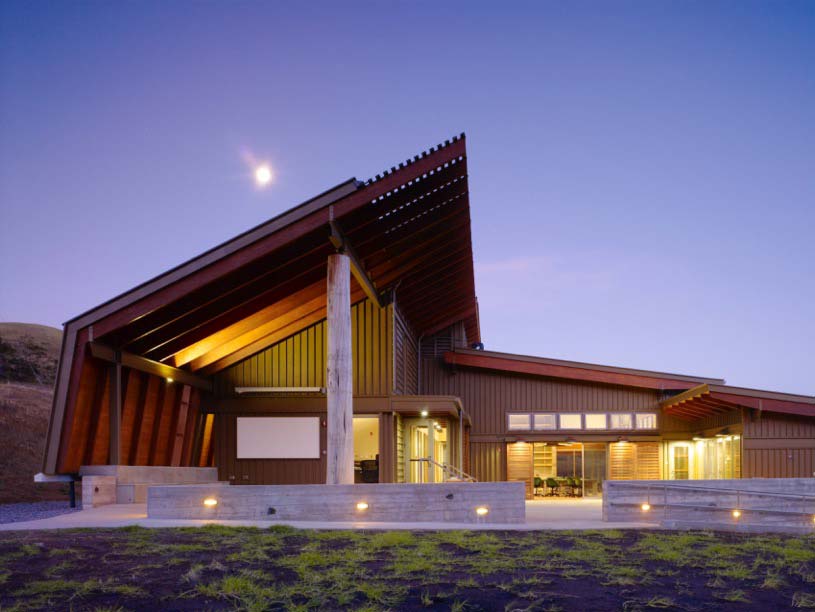
Conceived as a high school science building dedicated to the study of alternative energy, the new 4,000-nsf Energy Lab at Hawaii Preparatory Academy functions as a zero-net-energy, fully sustainable building. The project’s fundamental goal is that of educating the next generation of students in the understanding of environmentally conscious, sustainable living systems.
The project has achieved LEED Platinum certification and is a candidate for the Living Building Challenge. Completed in January 2010, the Energy Lab today strives as a living laboratory, furthering its educational goals as a functioning example of sustainability.
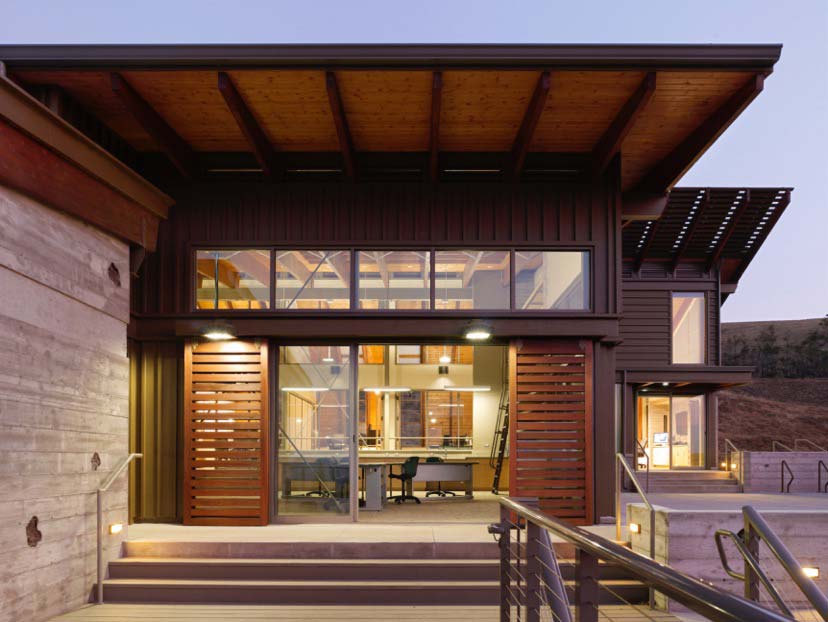
The Energy Lab was developed in response to the science curriculum it houses. From small project rooms, to a large research center, to a laboratory, spaces were designed to encourage student discovery, exploration and experimentation. The building’s configuration facilitates scientific study both indoors and out, linking interior spaces with the surrounding landscape. Students are surrounded by the systems that they study, and constantly reminded of their methods. The HPA Energy Lab offers a continuous sustainable ‘teaching moment’.
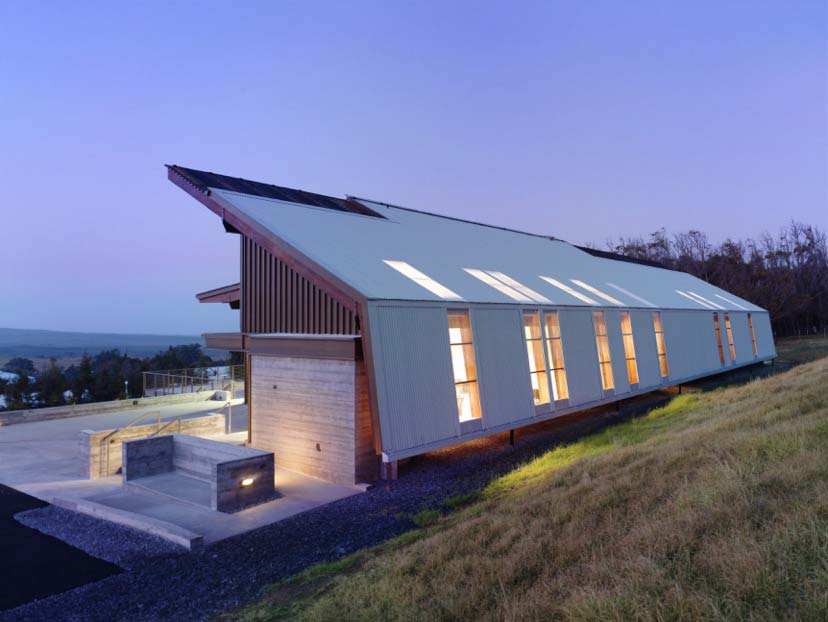
The building design was influenced by three key factors:
– Campus buildings designed by Vladimir Ossipoff, a renowned Russian/Hawaiian Modernist. The energy lab is constructed of board-formed concrete, glue-laminated timber structure, batten siding, and corrugated metal roofing. It is composed of three shed-roofed bars arranged along the hillside, in keeping with the spirit of Ossipoff’s original buildings in material and form.
– Harnessing the natural forces of the wind and sun. The building shape directs wind around the building.
– Project-based pedagogy of the educational curriculum. The building plan reflects the three stages of invention: 1) idea 2) research/simulation 3) construction/testing. Its openness fosters collaboration.
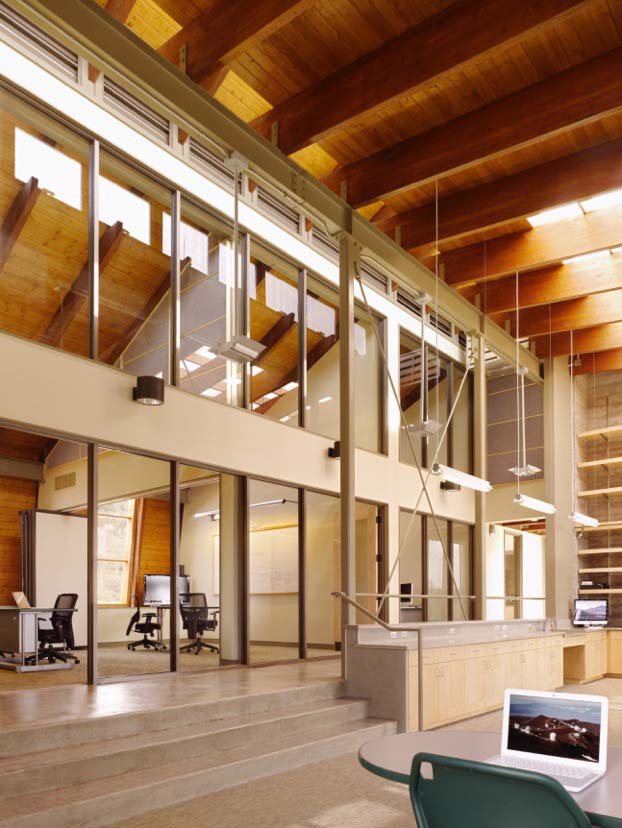
Unusual/innovative building components include:
Naturally ventilated, the building employs experimental radiant cooling systems as an alternative to air conditioning. Water is circulated at night through thermal roof panels, cooled via lower evening temperatures, and stored in a below-grade tank for use as chilled water for air handling during warm afternoons.
Its custom-designed automation system self-regulates cooling/heating, water systems, and energy generation via input from 250 sensors, maintaining interior temperature, relative humidity, and carbon dioxide levels.
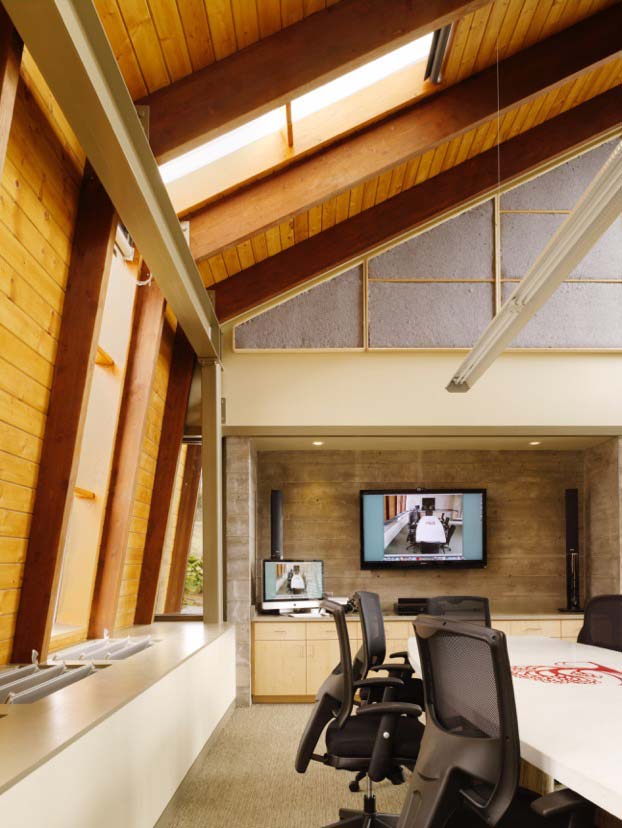
The shape of the building directs wind movement to create protected outdoor educational areas, and enhances airflow through the building to aid natural ventilation. The building was sited to utilize the strong trade winds for ventilation as well as a teaching tool in the study of wind.
Project Details:
Location: Hawaii, USA
Type: Educational
Client/Owner: Hawaii Preparatory Academy – Lindsay Barnes, Jr., Headmaster
Architects: Flansburgh Architects -David A. Croteau, AIA
Photographs: Matthew Millman


